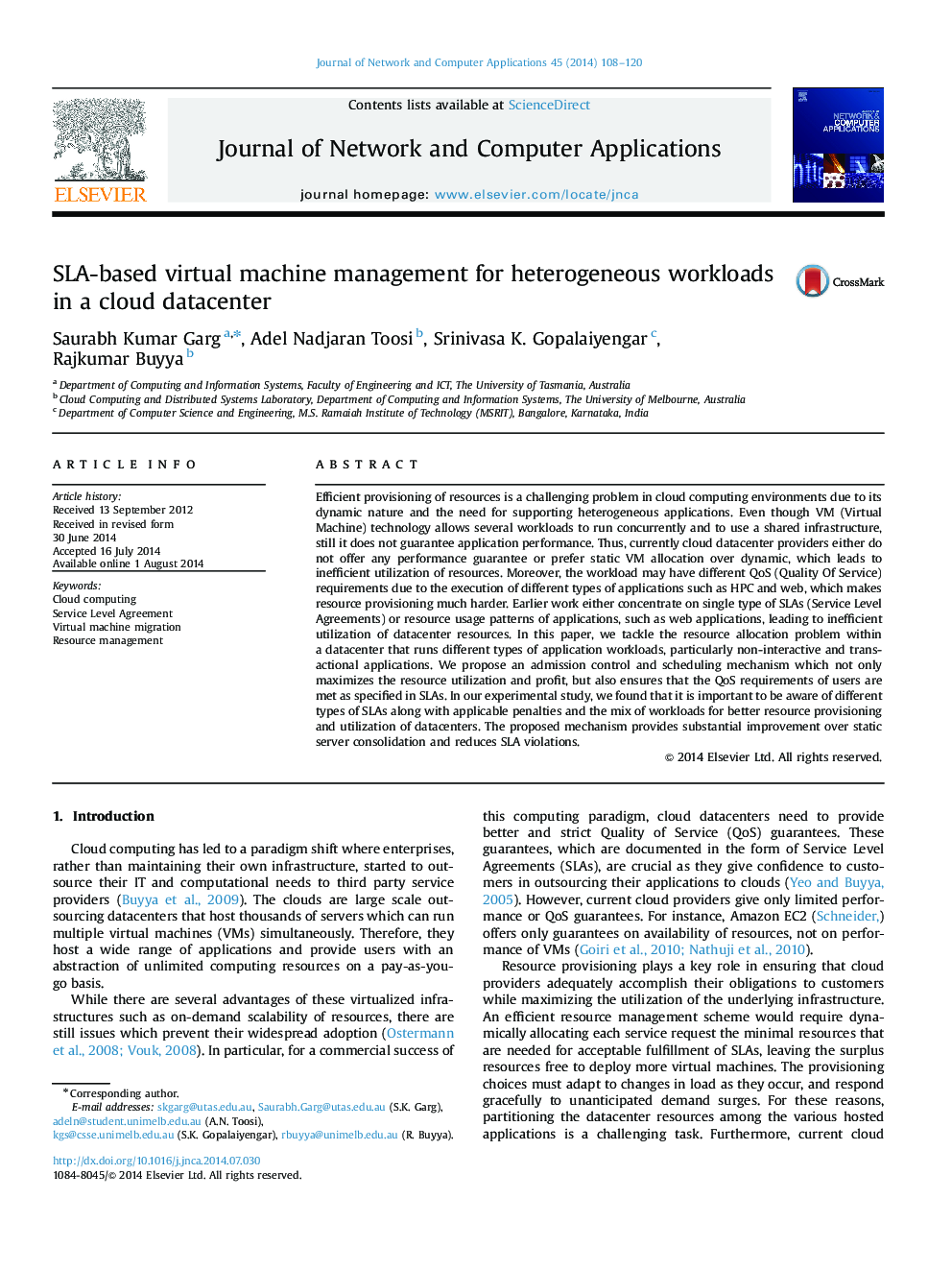| Article ID | Journal | Published Year | Pages | File Type |
|---|---|---|---|---|
| 457334 | Journal of Network and Computer Applications | 2014 | 13 Pages |
Efficient provisioning of resources is a challenging problem in cloud computing environments due to its dynamic nature and the need for supporting heterogeneous applications. Even though VM (Virtual Machine) technology allows several workloads to run concurrently and to use a shared infrastructure, still it does not guarantee application performance. Thus, currently cloud datacenter providers either do not offer any performance guarantee or prefer static VM allocation over dynamic, which leads to inefficient utilization of resources. Moreover, the workload may have different QoS (Quality Of Service) requirements due to the execution of different types of applications such as HPC and web, which makes resource provisioning much harder. Earlier work either concentrate on single type of SLAs (Service Level Agreements) or resource usage patterns of applications, such as web applications, leading to inefficient utilization of datacenter resources. In this paper, we tackle the resource allocation problem within a datacenter that runs different types of application workloads, particularly non-interactive and transactional applications. We propose an admission control and scheduling mechanism which not only maximizes the resource utilization and profit, but also ensures that the QoS requirements of users are met as specified in SLAs. In our experimental study, we found that it is important to be aware of different types of SLAs along with applicable penalties and the mix of workloads for better resource provisioning and utilization of datacenters. The proposed mechanism provides substantial improvement over static server consolidation and reduces SLA violations.
